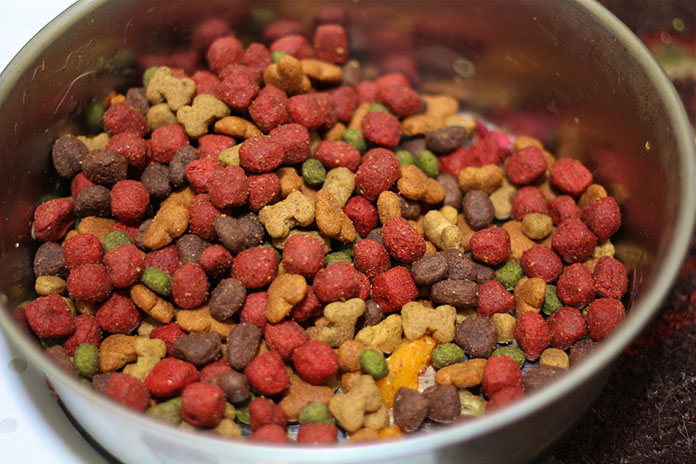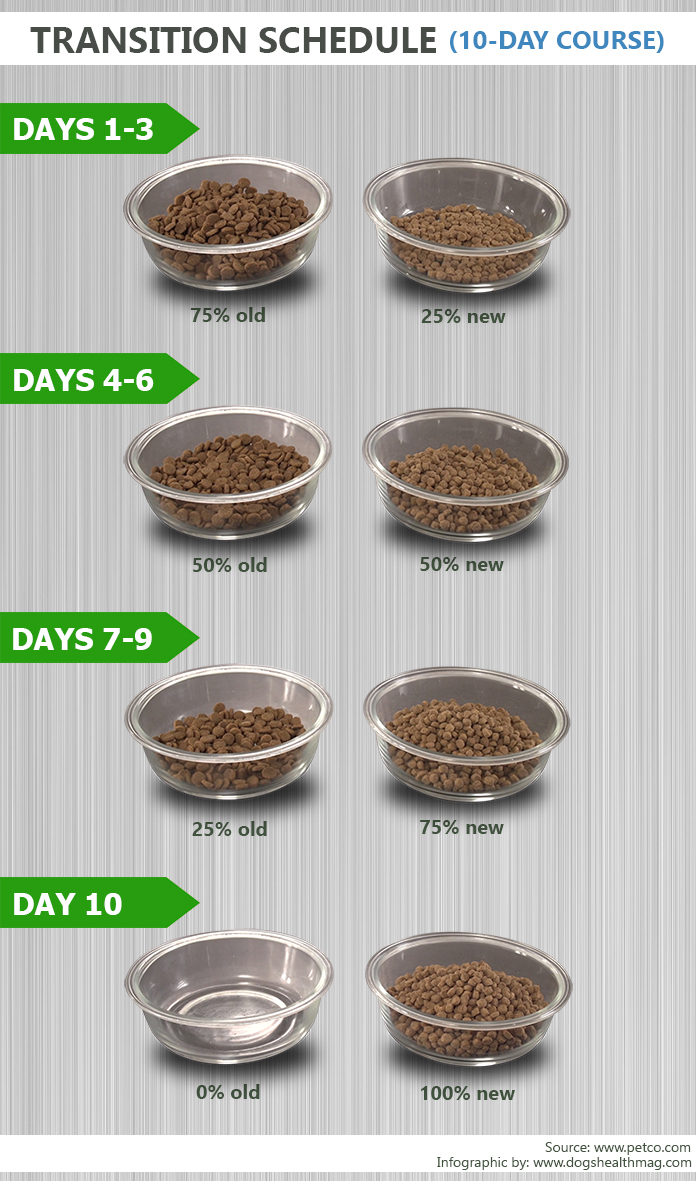Switching dog food is not as simple as just feeding him something else. Switching your dog’s food can be for a number of reasons. The most common are changing puppy food to adult to senior dog food. As your dog grows, his nutritional needs change. There are also other factors that may have an effect on your dog’s food and nutritional needs.

Dry colorful dog food pellets
Source: Sh4rp_i, CC-BY, via flickr
Is it bad to switch dog foods often?
The answer to that question depends on your dog. If you have a dog that can and will eat almost anything, changing dog food brands can be a fairly easy process, and is not harmful to your dog. Some dog owners change every three months while some prefer changing foods every time the bag of kibble runs out.
Do I need to change the food in a gradual way?
The simple answer to that question is “yes”, it is advisable to switch your dog’s food gradually, especially if you are unsure of any allergies your dog may have. There are also gastrointestinal issues to consider when transitioning dog food. If you have a dog that has issues with diarrhea, vomiting, or loss of appetite, then changing your dog’s food in a gradual way is the perfect answer.
Some dogs are particular about their diet. If they are accustomed to a particular food, they may not like the diet, which can make changing dog food more difficult.
Watch: How to Transition Your Pet to A New Food
How to Switch Dog Food Gradually?
The first thing about switching your dog’s food is finding the right food to give your dog. Your Veterinarian can tell you what nutritional needs are best for your dog. Age plays a vital role in deciding the right food for your dog.
If you have had your dog a number of years, you should have a general idea of what your dog can and will eat. Feeding your dog, small samples of the new food, can help you decide if your dog can and will eat the food. Transitioning your dog’s food bit by bit may take about 5 to 10 days, although these steps can be applied in 2-3 day intervals.

Transition Schedule: 10- Day Course
- Days 1-3: You will want to mix 25 percent of the new food with 75 percent of the old food.
- Days 4-6: Give your dog a mixture of 50 percent new food, and 50 percent of the old.
- Days 7-9: You can mix 75 percent new food with 25 percent of the old dog food.
- By Day 10 you should be able to feed your dog 100 percent of the new food.
Transitioning Dog Food Tips
- Feed your dog a sample of the new food to see if he will eat it without trouble or complications.
- You will want to monitor your dog during this process. If your dog develops diarrhea, vomiting, or loss of appetite, it is recommended that you take your dog to the Vet as soon as possible.
- Be patient with your dog, he may not like the food as well as the food they are accustom to.
The 10 day step method is just a guideline, not a rule. We will need to change our dog’s diet a few times during the dog’s life. As your dog matures and ages, his nutritional needs will change. If your dog has any medical issues, his diet may need to change in order for the prescribed treatment to work effectively.
On a Final Note
Transitioning dog food can be an easy process, but it also can be challenging, this is all dependent on your dog, and his eating habits. A slow transition is recommended to discover any complications that may arise from your dog’s new diet.
A visit to your Veterinarian can be beneficial, especially for older dogs. Food allergies are extremely important to watch out for and your Vet can aid you in discovering any possible allergy complications.
As always, we love our dogs and want what’s best for them. Just keep in mind that your dog may need special nutrition, and care must be taken in order to meet your dog’s needs.



















